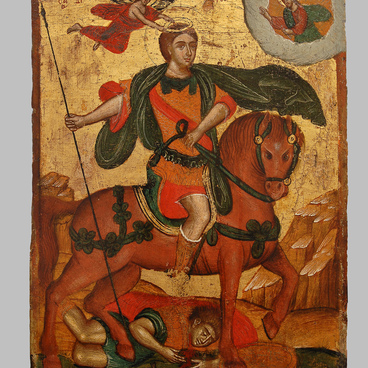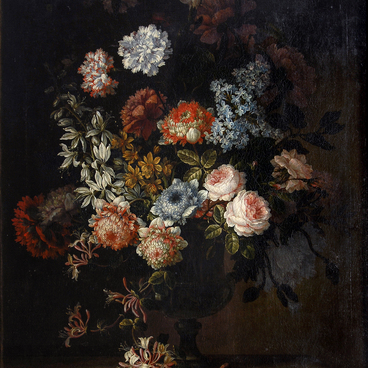For the Renaissance, the image of the Madonna became one of the central ones. Raphael Santi, an Italian painter, one of the brightest representatives of High Renaissance painting, made a whole gallery of paintings portraying Mary and the infant Jesus Christ. One of the most famous among them is the Sistine Madonna, located in the Gallery of Old Masters in Dresden.
The National Gallery of Art in Washington houses “Madonna Alba” painted in 1511, during Raphael’s most creative period. It was probably the painting that served as the inspiration for a loose copy by an unknown artist, from the collection of the Primorye Art Gallery. Curiously, until 1931, “Madonna Alba” was in the collection of the State Hermitage Museum, where it was exhibited for a long time, as one of the pinnacles of world painting, for the edification of the students of the Imperial Academy of Arts. In his “Guide to the Art Gallery of the Imperial Hermitage”, Alexandre Benois called Raphael an artist who managed to combine the grace of Leonardo da Vinci and the power of Michelangelo, “He turned Leonardo’s asexual insidious caress into a healthy and tender sensuality, and Buonarroti’s titanic impulse settled in his work in a calm and noble framework.”
“Madonna and Child” painted by an unknown artist of the Italian school, presumably in the 16th century, entered the collection in 1967 from the Pavlovsk Palace Museum, with a note that it is a copy of a work by Raphael Santi. The painting bears the key features of the genius master’s art: the bright harmony of the inner world, spiritual purity, and peace of mind. The Madonna is depicted sitting on the ground against an idealized landscape. She gently holds the Christ child with one hand and takes a hand of John the Baptist with the other one. Raphael painted her dressed in a traditional combination of a red tunic symbolizing the future sacrifice of the Son of God, and a blue cape — a symbol of innocence and purity. John the Baptist is depicted in a robe of skin (camel or sheep), according to the early Christian tradition.
The National Gallery of Art in Washington houses “Madonna Alba” painted in 1511, during Raphael’s most creative period. It was probably the painting that served as the inspiration for a loose copy by an unknown artist, from the collection of the Primorye Art Gallery. Curiously, until 1931, “Madonna Alba” was in the collection of the State Hermitage Museum, where it was exhibited for a long time, as one of the pinnacles of world painting, for the edification of the students of the Imperial Academy of Arts. In his “Guide to the Art Gallery of the Imperial Hermitage”, Alexandre Benois called Raphael an artist who managed to combine the grace of Leonardo da Vinci and the power of Michelangelo, “He turned Leonardo’s asexual insidious caress into a healthy and tender sensuality, and Buonarroti’s titanic impulse settled in his work in a calm and noble framework.”
“Madonna and Child” painted by an unknown artist of the Italian school, presumably in the 16th century, entered the collection in 1967 from the Pavlovsk Palace Museum, with a note that it is a copy of a work by Raphael Santi. The painting bears the key features of the genius master’s art: the bright harmony of the inner world, spiritual purity, and peace of mind. The Madonna is depicted sitting on the ground against an idealized landscape. She gently holds the Christ child with one hand and takes a hand of John the Baptist with the other one. Raphael painted her dressed in a traditional combination of a red tunic symbolizing the future sacrifice of the Son of God, and a blue cape — a symbol of innocence and purity. John the Baptist is depicted in a robe of skin (camel or sheep), according to the early Christian tradition.



